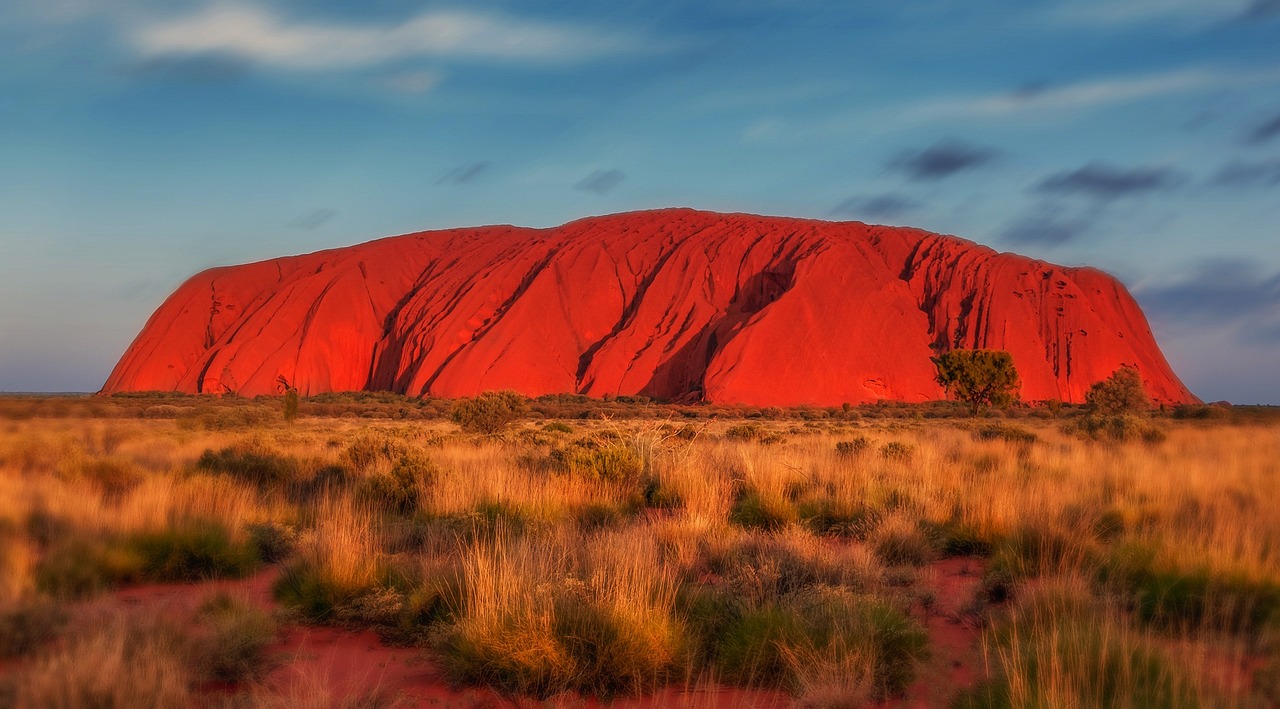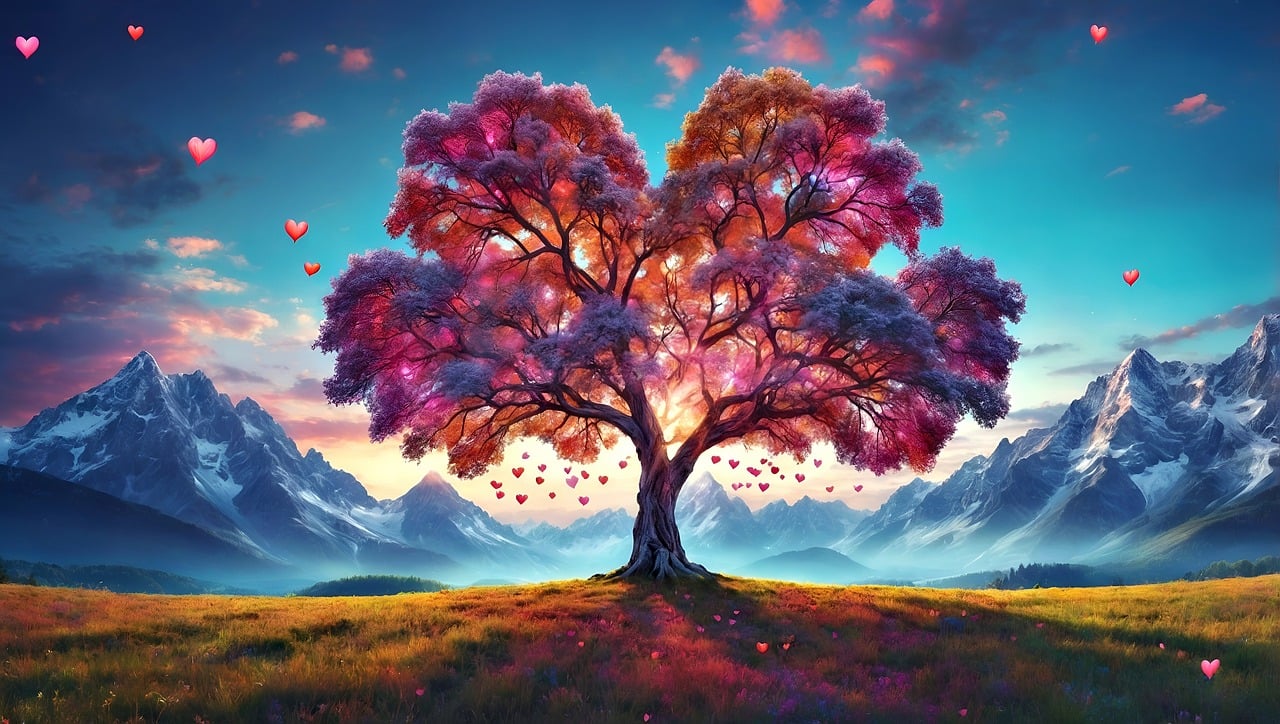Exploring the Spiritual Meaning of Uluru (Ayers Rock)

Hey there, amazing readers! 🖐️ Just a quick note: yes, we know there are a lot of ads here. Trust us, we get it—it’s not the prettiest look, but they help us keep this blog alive and kicking. Those pesky little ads cover the costs of all the behind-the-scenes magic, from hosting and tech stuff to creating content we hope you’ll love.
We’re committed to delivering quality posts, and your support (even just sticking around despite the ads) means everything to us. So, bear with us, and thanks for helping us keep the good vibes rolling. Now, on to the fun stuff! 😉
TRANSLATE BUTTON AT THE END OF THE ARTICLE
Uluru, also known as Ayers Rock, is a natural wonder and an iconic symbol of Australia.
This massive sandstone monolith stands proudly in the heart of the Australian Outback, and it holds profound spiritual significance for the Indigenous people of Australia.
In this comprehensive article, we will delve into the spiritual meaning of Uluru, its cultural importance, and the stories that have been passed down through generations.
Uluru’s Geological and Cultural Significance
Geological Marvel
Uluru is a geological marvel, a colossal sandstone formation that seems to rise abruptly from the flat desert landscape.
It stands 348 meters tall and extends underground for about 2.5 kilometers.
This incredible structure was created over 500 million years ago and is a product of the earth’s geological evolution.
The natural coloring of the rock, with its red hue, is due to the presence of iron minerals in the sandstone.
The rock’s unique composition and formation make it an object of fascination for geologists and visitors alike.
Its size and appearance have earned it a place on the UNESCO World Heritage List, recognizing its global importance.
Cultural Importance
Uluru is not just a physical landmark; it is a spiritual and cultural cornerstone for the Indigenous people of Australia, particularly the Anangu people.
For them, Uluru is Tjukurpa, which encompasses their traditional law, stories, and beliefs.
This sacred site has been a center of cultural significance for more than 10,000 years.
Uluru’s cultural importance is further highlighted by its inclusion in the National Heritage List in 1987.
This recognition reflects its significance not only to the Indigenous people but also to the broader Australian community.
The Creation Stories
Tjukuritja
One of the most significant creation stories associated with Uluru is Tjukuritja.
According to this story, ancestral beings traveled across the land, creating the features of the landscape as they went.
These beings transformed into the geological formations we see today, including Uluru and Kata Tjuta (The Olgas).
The story of Tjukuritja teaches the Anangu about their cultural and spiritual heritage.
Tjukuritja is a rich and complex narrative that intertwines the landscape with the spiritual beliefs of the Anangu people.
It emphasizes the interconnectedness of all things, the importance of respecting the land, and the role of ancestral beings in shaping their world.
The Mala People
Another important story is that of the Mala people.
The Mala Tjukurpa tells the tale of a group of ancestral beings who came to Uluru from the north.
These beings were tasked with teaching the people the right way to live.
Their story is represented in the rock art and engravings found on Uluru’s surface.
The Mala Tjukurpa carries a powerful message of morality and cultural values.
It underscores the significance of passing down knowledge from one generation to the next and reinforces the idea that the land itself is a source of wisdom.
Spiritual Significance
Connection to the Land
Uluru holds profound spiritual meaning for the Indigenous people as it represents their deep connection to the land.
The land, known as the Anangu’s Tjukurpa, embodies their history, culture, and beliefs.
The rock formations are seen as the physical evidence of the actions of their ancestral beings.
This connection is not just an abstract concept; it is deeply ingrained in the daily lives of the Anangu.
It informs their choices, actions, and responsibilities as stewards of the land.
Ceremonial Practices
Uluru is a place of ongoing spiritual ceremonies and rituals.
These ceremonies are essential for maintaining the cultural and spiritual integrity of the Indigenous people.
They involve singing, dancing, and various rituals that connect the Anangu to their ancestral past.
The ceremonies at Uluru are a testament to the resilience of Indigenous culture.
They have persisted despite the challenges posed by colonization and continue to be a source of strength and identity for the Anangu.
The Significance of Waterholes
Mutitjulu Waterhole
Waterholes around Uluru are of significant spiritual importance.
One such waterhole is Mutitjulu, near the base of Uluru.
It is believed to be the home of Wanampi, a giant snake, and is an essential part of the Tjukurpa stories.
Waterholes like Mutitjulu are not merely sources of water in the arid desert; they are portals to the Dreamtime, where the past and present intersect.
They are places of reflection, prayer, and connection to the spiritual world.
Life-Giving Waters
The presence of water in the desert is seen as a life-giving force, and it plays a vital role in the Indigenous culture.
The Anangu people rely on these water sources for their survival and consider them sacred.
The significance of water in the desert goes beyond its practical importance.
It symbolizes the interdependence of all living things and the delicate balance that sustains life in a harsh environment.
Uluru: A Place of Learning
Passing Down Knowledge
Uluru is not just a static monument but a place of learning and sharing knowledge.
Elders pass down their wisdom and stories to the younger generations, ensuring that the Tjukurpa lives on.
The act of passing down knowledge is a sacred duty and a way of preserving cultural identity.
It ensures that the wisdom of the past continues to guide the Anangu into the future.
Tourism and Education
Tourism has brought many visitors to Uluru, offering them a unique opportunity to learn about the Indigenous culture and spirituality.
Interpretive centers and guided tours educate people about the significance of the site.
Tourism has the potential to be a bridge between cultures.
It can foster mutual understanding and respect, provided it is approached with sensitivity and a willingness to learn.
The Controversy of Climbing Uluru
A Sensitive Issue
For many years, tourists were allowed to climb Uluru, despite the spiritual significance and requests from the Anangu people to respect their beliefs.
Climbing the rock has been a contentious issue, and in 2019, it was officially banned due to the cultural sensitivities of the Indigenous community.
The ban on climbing Uluru reflects the need to strike a balance between preserving cultural heritage and allowing tourism.
It serves as a reminder that some places are so sacred that they should remain untouched.
Conclusion
Uluru, the sacred monolith of the Outback, holds a unique and profound spiritual meaning for the Indigenous people of Australia.
It is a living connection to their Tjukurpa, a source of cultural knowledge, and a reminder of the creation stories that have shaped their identity.
As visitors to this incredible site, it is our responsibility to respect and honor the cultural significance of Uluru, ensuring that this spiritual connection remains unbroken.
Uluru’s significance is not confined to the past; it is a living, evolving force in the present.
It invites us to reflect on our relationship with the land, the stories that shape us, and the importance of preserving cultural diversity.
Frequently Asked Questions
1.
What is the spiritual significance of Uluru?
Uluru is spiritually significant to the Indigenous people of Australia, particularly the Anangu.
It represents their deep connection to the land, their cultural heritage, and their creation stories.
2.
What are the creation stories associated
with Uluru?
Two of the most significant creation stories are Tjukuritja, which tells of ancestral beings creating the landscape, and the Mala Tjukurpa, which focuses on the teachings of ancestral beings.
3.
Why is water significant around Uluru?
Waterholes like Mutitjulu Waterhole are of spiritual importance as they are believed to be inhabited by ancestral beings and are essential for survival in the desert.
4.
Why was climbing Uluru banned?
Climbing Uluru was banned in 2019 due to the cultural sensitivities of the Indigenous community and their requests to respect the spiritual significance of the site.
5.
How can tourists learn about the Indigenous culture at Uluru?
Tourists can learn about the Indigenous culture through interpretive centers, guided tours, and interactions with the local community, which provide insight into the cultural and spiritual significance of Uluru.
6.
What does the term “Tjukurpa” mean in the context of Uluru?
Tjukurpa encompasses the traditional law, stories, and beliefs of the Indigenous people of Australia.
It represents their cultural and spiritual heritage.
7.
How can visitors respect the spiritual significance of Uluru?
Visitors can respect the spiritual significance of Uluru by refraining from climbing the rock, adhering to cultural guidelines, and being mindful of the sacredness of the site to the Indigenous people.
8.
How has Uluru contributed to Australia’s cultural heritage?
Uluru’s inclusion in the National Heritage List reflects its importance to the broader Australian community.
It has become a symbol of Australia’s diverse cultural heritage and its recognition of Indigenous traditions.
9.
What are some of the challenges faced by the Indigenous community in preserving Uluru’s cultural significance?
The Indigenous community faces challenges in balancing the preservation of their cultural significance with the demands of tourism.
Striking this balance while maintaining their traditions is an ongoing challenge.
10.
How can the world learn from the spiritual significance of Uluru?
The world can learn from Uluru by recognizing the importance of preserving cultural heritage, respecting Indigenous knowledge, and fostering greater understanding between different cultures.
Uluru serves as a model for the coexistence of tradition and modernity.

The Enlightenment Journey is a remarkable collection of writings authored by a distinguished group of experts in the fields of spirituality, new age, and esoteric knowledge.
This anthology features a diverse assembly of well-experienced authors who bring their profound insights and credible perspectives to the forefront.
Each contributor possesses a wealth of knowledge and wisdom, making them authorities in their respective domains.
Together, they offer readers a transformative journey into the realms of spiritual growth, self-discovery, and esoteric enlightenment.
The Enlightenment Journey is a testament to the collective expertise of these luminaries, providing readers with a rich tapestry of ideas and information to illuminate their spiritual path.
Our Diverse Expertise 🌟
While our primary focus is on spirituality and esotericism, we are equally passionate about exploring a wide range of other topics and niches 🌍📚. Our experienced team is dedicated to delivering high-quality, informative content across various subjects ✨.
To ensure we provide the most accurate and valuable insights, we collaborate with trusted experts in their respective domains 🧑🏫👩🏫. This allows us to offer well-rounded perspectives and knowledge to our readers.
Our blog originally focused on spirituality and metaphysics, but we’ve since expanded to cover a wide range of niches. Don’t worry—we continue to publish a lot of articles on spirituality! Frequently visit our blog to explore our diverse content and stay tuned for more insightful reads.





